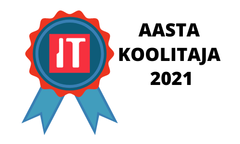AZ-040T00: Automating Administration with PowerShell
This course replaces the previous MOC-10961 and MOC-10962 courses.
During this five-day course students will gain the skills to identify and build the command they require to perform a specific task. In addition, students learn how to build scripts to accomplish advanced tasks such as automating repetitive tasks and generating reports.
This course provides prerequisite skills supporting a broad range of Microsoft products, including Windows Server, Windows Client, Microsoft Azure, and Microsoft 365. In keeping with that goal, this course will not focus on any one of those products, although Windows Server, which is the common platform for all of those products, will serve as the example for the techniques this course teaches.
Target audience:
This course is intended for IT Professionals who are already experienced in general Windows Server, Windows client, Azure, and Microsoft 365 administration, and who want to learn more about using Windows PowerShell for administration. No prior experience with any version of PowerShell or any scripting language is assumed. This course is also suitable for IT Professionals already experienced in server administration, including Microsoft Exchange Server, Microsoft SharePoint Server, and Microsoft SQL Server.
Job role: Administrator
Features: none
Prerequisites to the course (recommended):
Before attending this course, students must have:
- experience with Windows networking technologies and implementation;
- experience with Windows Server administration, maintenance, and troubleshooting.
After completing this course, students will be able to:
- describe the functionality of Windows PowerShell and use it to run and find basic commands;
- identify and run cmdlets for local system administration;
- work with the Windows PowerShell pipeline;
- use PSProviders and PSDrives to work with other forms of storage;
- query system information by using WMI and CIM;
- work with variables, arrays, and hash tables;
- create basic scripts in Windows PowerShell;
- administer remote computers with Windows PowerShell;
- manage Azure resources with PowerShell;
- manage Microsoft 365 services with PowerShell;
- use background jobs and scheduled jobs.
The training topics and description:
Module 1: Getting started with Windows PowerShell
This module will introduce you to Windows PowerShell and provide an overview of the product’s functionality. The module explains how to open and configure Windows PowerShell. It also explains how to run commands and use the built-in Help system in Windows PowerShell.
Module 2: Windows PowerShell for local systems administration
This module introduces you to the different types of cmdlets commonly used for system administration. While you can search for cmdlets each time you need to accomplish a task, it is more efficient to have at least a basic understanding of these cmdlets. This module also explains how to manage Windows 10 by using PowerShell.
Module 3: Working with the Windows PowerShell pipeline
This module introduces the pipeline feature of Windows PowerShell. The pipeline feature is included in several command-line shells such as the command prompt in the Windows operating system. However, the pipeline feature in Windows PowerShell provides more complex, flexible, and capable functionalities compared to other shells. This module provides you with the skills and knowledge that will help you use Windows PowerShell more effectively and efficiently.
Module 4: Using PSProviders and PSDrives
This module introduces the PSProviders and PSDrives adapters. A PSProvider is basically a Windows PowerShell adapter makes some form of storage resemble a hard drive. A PSDrive is an actual connection to a form of storage. You can use these two technologies to work with various forms of storage by using the same commands and techniques that you use to manage the file system.
Module 5: Querying management information by using CIM and WMI
This module introduces you to two parallel technologies: Windows Management Instrumentation (WMI) and Common Information Model (CIM). Both these technologies provide local and remote access to a repository of management information including access to robust information available from the operating system, computer hardware, and installed software.
Module 6: Working with variables, arrays, and hash tables
Variables are an essential component of scripts. You can use variables to accomplish complex tasks that you can't complete by using a single command. This module explains how to work with variables, arrays, and hash tables as steps in learning how to create Windows PowerShell scripts.
Module 7: Windows PowerShell scripting
This module explains how to package a Windows PowerShell command in a script. Scripts allow you to perform repetitive tasks and more complex tasks than cannot be accomplished in a single command.
Module 8: Administering remote computers with Windows PowerShell
This module introduces you to the Windows PowerShell remoting technology that enables you to connect to one or more remote computers and instruct them to run commands on your behalf.
Module 9: Managing Azure resources with PowerShell
This module provides information about installing the necessary modules for cloud services management. It explains how to use PowerShell commands to perform some simple administrative tasks on cloud resources such as Azure virtual machines (VMs), Azure storage accounts, and Azure subscriptions. This module also describes how to use the Azure Cloud Shell environment to perform PowerShell-based or Bash-based administration directly from the Azure portal.
Module 10: Managing Microsoft 365 services with PowerShell
This module describes how to use PowerShell to manage Microsoft 365 user accounts, licenses, and groups, Exchange Online, SharePoint Online, and Microsoft Teams.
Module 11: Using background jobs and scheduled jobs
This module describes how to use background jobs and scheduled jobs. It also explains how to create scheduled jobs and retrieve job results.
Training Principles:
The training is held in Estonian!
Each learning module is supported by practical exercises with hands-on laboratories.
Length: 40 academic hours
Continuing Education Curriculum Group: 0612 Database and Network Design and Administration Curriculum Group
More detailed information about the training: https://docs.microsoft.com/en-us/learn/certifications/courses/az-040t00
Participants who have completed the training will be issued a certificate. The prerequisite for issuing a certificate is full participation in training and achievement of learning outcomes. The acquisition of learning outcomes is assessed during the training through practical assignments. For participants who have not achieved the learning outcomes, a certificate of attendance will be issued upon request.
The training is conducted by Henn Sarv.
Trainer introduction:
Training Experience and Areas
Henn has been conducting trainings at IT Koolitus for over 25 years. He has previous training experience having shared his knowledge with Novell administrators for several years. At IT Koolitus, he has mainly, but not exclusively, focused on Microsoft products, ranging from regular users (Excel to Vision) to system administrators and programmers. However, his main expertise lies in databases (SQL) and business intelligence (BI, Excel).
Strengths as a Trainer
Despite standing in front of the class for 25+ years, Henn has not lost touch with everyday life: he has established a development company and successfully sold it; he has consulted and implemented systems in several companies, owns a farm, and organizes badminton tournaments. Maintaining his connection with real life experiences helps Henn be an expert and a reliable source when sharing knowledge. His own ability to learn and him having completed over 80 professional exams allows him to understand learners excellently and serves as a strength for a trainer.
Ajakava

Koolitaja:
Henn SarvLisainfo
Registreerudes e-poe, e-kirja või telefoni teel, saadame Teile arve ja täpsema info osalemise kohta. Üks nädal enne igat koolituspäeva saadame Teile e-kirjaga meenutuse osalemise infoga. Koolitusel osalemine on nimeline, kuid saate osalejat tasuta muuta kuni koolitusprogrammi alguseni.
Koolituse läbinutele väljastatakse tunnistus. Tunnistuse väljastamise eelduseks on terves mahus koolitusel osalemine ja õpiväljundite saavutamine. Õpiväljundite saavutamist hinnatakse praktiliste tööde käigus. Osalejale, kes õpiväljundeid saavutanud ei ole, väljastatakse soovi korral koolitusel osalemise kohta tõend.
Koolitus toimub õppeks vajaliku tarkvaraga arvutiklassis. Ratastooliga ligipääs on tagatud.
Tühistamistingimused
Kui te ei saa mingil põhjusel koolitusel osaleda, palun andke sellest teada e-posti aadressil [email protected]. Kui teatate mitteosalemisest vähemalt 10 tööpäeva ette, lepime Teiega kokku uue aja või tagastame 100% koolituse maksumusest. Tagastame koolituse osalustasu täismahus juhul, kui pole tehtud koolituse korraldamisega seotud kulutusi (ostetud õppematerjale jms).
Kui teatate mitteosalemisest 5-9 tööpäeva enne koolitust, kuulub tasumisele 50% arvest.
Hilisemal teavitamisel, koolitusele mitteilmumisel, sellest mitteteatamisel või koolituse poolelijätmisel õppetasu ei tagastata.
Kampaania komplekti ostu korral ei ole tellimuse tühistamine (raha tagastamine) enam võimalik, kui keegi on juba koolitusel osalenud.




